Submitted by chandra on Wed, 2011-05-11 16:23
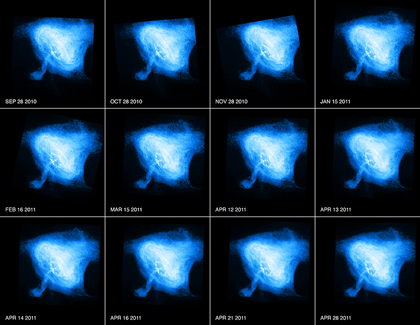
A new movie from NASA's Chandra X-ray Observatory shows a sequence of Chandra images of the Crab Nebula, taken over an interval of seven months. Dramatic variations are seen, including the expansion of a ring of X-ray emission around the pulsar (white dot near center) and changes in the knots within this ring.
Submitted by chandra on Wed, 2011-05-04 10:57
As part of our efforts to work with the formal education community (that is, generally K-12 schools), the Chandra EPO team works with the National Science Olympiad. The Olympiad is an excellent science competition that involves middle and high school teams from all 50 states, often getting kids involved at an even earlier age.
Submitted by chandra on Tue, 2011-04-26 13:40
This Chandra image of the Tycho supernova remnant contains new evidence for what triggered the original supernova explosion. Tycho was formed by a Type Ia supernova, a category of stellar explosion used in measuring astronomical distances because of their reliable brightness. In the lower left region of Tycho is a blue arc of X-ray emission. Several lines of evidence support the conclusion that this arc is due to a shock wave created when a white dwarf exploded and blew material off the surface of a nearby companion star. This supports one popular scenario for the trigger of a Type Ia supernova. Understanding the origin of Type Ia supernovas is important because they have been used to determine that the Universe is expanding at an accelerating rate
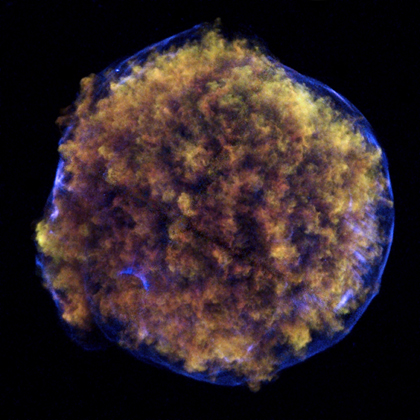
Submitted by chandra on Mon, 2011-04-25 13:11
We are very excited to announce the launch of a new – and yet somewhat familiar -- project. Today, “From Earth to the Solar System” officially opens. As the name implies, FETTSS (our new favorite acronym) is a direct descendent of the “From Earth to the Universe” project.
Submitted by chandra on Wed, 2011-04-20 16:01
Submitted by chandra on Wed, 2011-04-13 09:50
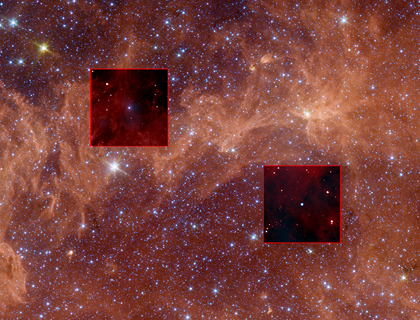
Like looking for Easter eggs in a lawn of long grass, the hunt for the Milky Way's most massive stars takes persistence and sharp eyes. In their stellar search through our Galactic backyard, astronomers have used powerful telescopes sensitive to X-ray and infrared radiation to find evidence for a substantial population of X-ray emitting massive stars.
Submitted by chandra on Mon, 2011-04-11 17:48
Cady Coleman was one of the astronauts who helped launch Chandra aboard the Space Shuttle Columbia back in July 1999. While we have always appreciated her many talents -- chemist, Air Force officer, astronaut, and mother -- we didn’t realize that we were missing out on another: flutist.
Submitted by chandra on Wed, 2011-04-06 15:31
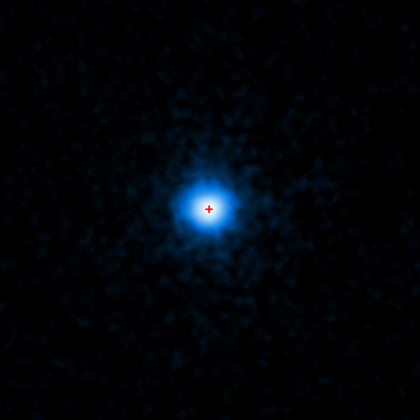
The center of this image contains an extraordinary gamma-ray burst (GRB) called GRB 110328A, observed with NASA's Chandra X-ray Observatory. This Chandra observation confirms the association of GRB 110328A with the core of a distant galaxy and shows that it was an exceptionally long lived and luminous event compared to other GRBs.
Submitted by chandra on Thu, 2011-03-31 08:02
This week, NASA announced the selection of three prestigious fellowships, each named after a distinguished scientist: Einstein, Hubble, and Sagan. Every year, NASA awards these fellowships to recent Ph.D.s in astronomy, physics or a related field. The Chandra X-ray Center oversees the Einstein Fellowships, which cover the topics in high-energy astrophysics. The Space Telescope Science Institute runs the Hubble Fellowships, and JPL is in charge of the Sagan ones.
Submitted by chandra on Thu, 2011-03-24 10:00
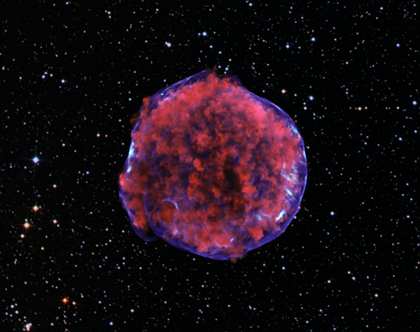
This image comes from a very deep Chandra observation of the Tycho supernova remnant, produced by the explosion of a white dwarf star in our Galaxy. Low-energy X-rays (red) in the image show expanding debris from the supernova explosion and high energy X-rays (blue) show the blast wave, a shell of extremely energetic electrons . These high-energy X-rays show a pattern of X-ray "stripes" never previously seen in a supernova remnant. By rolling the mouse over the color image above, two regions containing stripes in the high energy image can be seen superimposed on the full color version. Some of the brightest stripes can also directly be seen in the full color image, on the right side of the remnant pointing from the outer rim to the interior. The stellar background is from the Digitized Sky Survey and only shows stars outside the remnant.
Pages